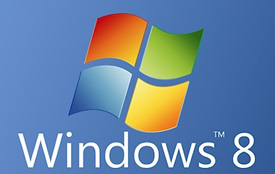 Microsoft released Windows 8 in October with high hopes of enticing users to either upgrade their older versions of Windows to Windows 8 or simply buy a new Windows 8 based PC outright, but that has turned out to be a pipe dream.
Microsoft released Windows 8 in October with high hopes of enticing users to either upgrade their older versions of Windows to Windows 8 or simply buy a new Windows 8 based PC outright, but that has turned out to be a pipe dream.
Most consumers and businesses seem intent on skipping the upgrade this time around thanks to several major blunders Microsoft made while planning and designing Windows 8.
First of all, people are pretty happy with their current Windows version. Both Windows XP and Windows 7 are quite stable as Windows goes and the computer hardware they run on are more than capable of running the current generation of software. In short, there is simply no pressing need for most of us to upgrade right now.
Second, Microsoft decided to change the look and feel of Windows 8 so much that it actually scared a lot of folks into believing that there would be a huge learning curve involved with making the upgrade. And guess what? They’re right! Focus group after focus group indicated in the strongest way possible that the new Windows 8 user interface was both unnecessary and unwelcome, but the guys and gals in Redmond forged ahead anyway, ignoring the rumblings of impending doom at their own peril.
Now that the preliminary sales data are in, it’s clear that sales of both Windows 8 upgrade packages and new Windows 8 PCs are stuck in the mud with no signs of breaking free any time soon. Microsoft is now attempting to fix at least half of that problem by offering computer manufacturers deep discounts on OEM versions of Windows as a means of spurring new PC sales with lower hardware prices.
Personally, I don’t think it’ll work. To paraphrase a once-famous politician, a cheaper pig is still a pig regardless of its price. If Microsoft really wants to boost sales of Windows 8, they need to fix the core problem instead of trying to manipulate demand via lower prices. Here are two great places to start:
1 – Bring back the Start Menu via a Windows Update.
2 – In the same update, give users the option of booting directly to the Desktop instead of the Start Screen, and make that option the default.
Desktop and laptop computers are not mobile devices so it was foolish for Microsoft to try to make them look and feel like mobile devices under Windows 8. Even the most successful companies stumble when they stubbornly refuse to listen to their customers, but the smart ones quickly see the error of their ways and fix whatever is actually wrong. But it appears that in the case of Windows 8, Microsoft has decided to fix a broken glass with a hammer instead of a spot of glue.